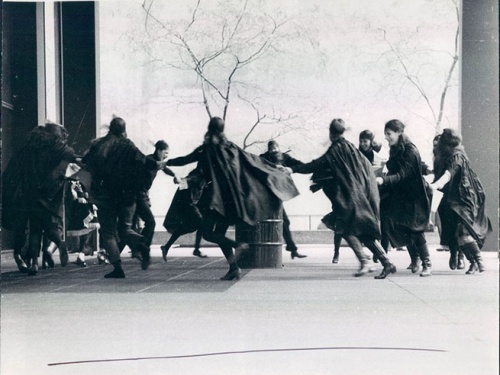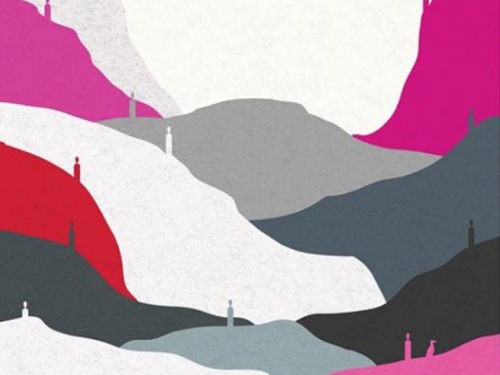Cinematic Renaissance and Women's Time: An Interview with Laura Mulvey
As Onwards and Outwards continues across venues nationwide, celebrating 50 years of women filmmakers, we caught up with director and film theorist Laura Mulvey to hear her thoughts on the programme, how the industry has changed in recent years and the multiple ways in which women's cinema might be concieved of and created.
In 1972, you co-programmed the Edinburgh Film Festival’s Women’s Film event. You have mentioned how Onwards and Outwards reminds you of that moment. Could you tell us a little more about it?
In 1972, Lynda Myles, Claire Johnston and I researched the history of films made by women as best we could. This event predated ‘film studies’ and academic research on the topic. Compared to other fields, there were relatively few women film directors. At the time, feminists were also searching for lost women writers and artists. It seemed obvious that the question of money was key: the more filmmaking operated as an industry, the less likely women were to have a place. The fact that only two working directors (Ida Lupino and Dorothy Arzner) were women during the Hollywood studio system era confirmed this. On the other hand, women had flourished, at least comparatively, in the early days of the industry, before it was systematised into an oligopoly. Predictably, we found women working more easily in the margins: in the avant-garde and, patchily, in art cinema.
How do you feel about events and projects like these still being seen as necessary, so many years later?
In 1972, we programmed every film made by a woman that we could find and of which a print was available. The event lasted a week. Since then, women have had infinitely more opportunities to make films and it is definitely to be celebrated that Onwards and Outwards can focus exclusively on women making films in the UK today. That in itself indicates enormous progress.
However, in 1972 we expected that women would be making 50% of films around the turn of the century. As this is so clearly not the case, a programme such as Onwards and Outwards is essential; not only does it draw attention to the continued struggle that women have to make films but it also draws attention to women’s creativity, imagination and the particular ideas they work with. At the same time, between then and now, the history of women in the cinema has been much, much more extensively researched. The Women's Film and Television History Networks have been and are crucial, moving beyond the woman director into all aspects of women’s work in cinema and discovering the richness of women’s contributions to early cinema.
The Onwards and Outwards programme explores the issue of finding space for independent expression within the film industry. Do audiences also have a responsibility to engage with films actively rather than passively consuming them?
This is an important question. In the 1970s, there was a general consensus among feminists that cinema should return to zero, should re-invent ways in which women were represented on the screen and that audiences should be prepared to engage actively with this kind of cinema. That is: to be as prepared to think as much while watching a film as, say, reading an equivalently difficult book. But that position now seems extreme. Very interesting films made by women in the intervening years show that women’s cinema can occupy a wide range of aesthetic and narrative possibilities. There is a special ‘in between’ space, marked, for instance, by Chantal Akerman and Joanna Hogg, in which the medium is always approached experimentally but not so much in the spirit of the ‘negative aesthetic’ of the 1970s.
You have drawn attention to the title of the programme having a connection to the words of Walt Whitman's Song of Myself. What does the title Onwards and Outwards bring to mind?
I happened to be reading Song of Myself very soon after first hearing the title of this event and I noticed:
"All goes onward and outward, nothing collapses,
And to die is different from what any one supposed, and luckier."
At first I thought it mysterious, a coincidence. But then I realised that one could apply Whitman’s confusion of time—his rejection of chronology and linearity, beginnings and ends, birth and death, individual trajectories, as well as his evocation of instants, both visual and emotional—to this event in two ways. First, ‘onward’ and ‘outward’ confuse spatial and temporal dimensions, in a way that is interesting for cinema and evokes, for instance, Akerman’s extended shots in Jeanne Dielmann that then extend time into the spaces of the flat.
And secondly, although this is a displacement of the spirit of the poem (which refuses differentiation between men and women or anything else), this confusion of the spatial and temporal evokes an aesthetic of ‘women’s time’, which is resistant to the chronological and the linear, bringing the time of the past into the space of the present.
In this sense, any rediscovery of women’s cinema cites its previous instances, incorporates its history, its pioneers. Yet, unexpected narratives may also have emerged in the intervening gap in time. Hitherto unexplored or not yet relevant meanings may become visible in a new context. It is in this sense that I understand "to die is different…and luckier", at an angle from the poem, as a way of envisioning these kinds of ‘renaissances’. ■
Onwards and Outwards is a unique programme of films made by British women filmmakers over the last 50 years. The programme runs until the end of December at nationwide venues.
On 12 December 2015, there is a symposium on women's filmmaking in contemporary Britain, conceived by Prof. Lúcia Nagib, Alison Butler and Prof. Laura Mulvey.
On 29 June 2016, Laura Mulvey introduces Chantal Akerman's last film No Home Movie.
This article is posted in: Blog, Film, Interviews
Tagged with: Laura Mulvey, Onwards and Outwards, Walt Whitman, Chantal Akerman, Maya Caspari, Ida Lupino, Dorothy Arzner, Feminism, Film Director, Feminist Film, Will Guy, Helene Aalborg





/index.png?itok=qcQMXTv9)



